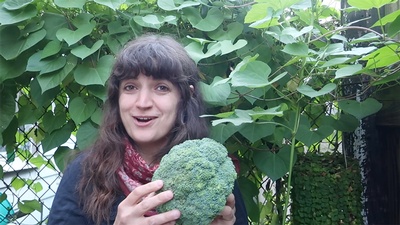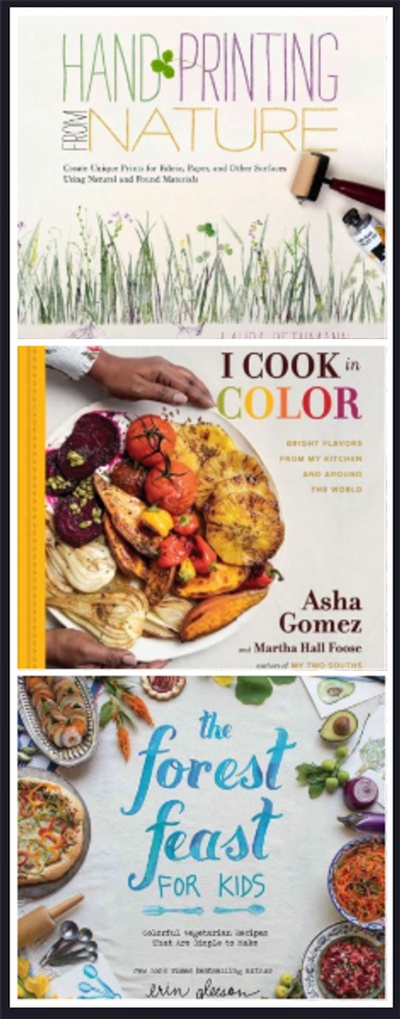Broccoli is a delicious, nutritious flower! With its different textures, vibrant green color, and good flavor, broccoli can ignite ideas both in and out of the kitchen.
Blanching is a way to quickly cook vegetables in hot water. This technique makes vegetables colorful and tender, while still keeping them crisp. Broccoli is a great vegetable to use because of the beautiful bright green color that blanching brings out, but many different favorite vegetables can be prepared this way!
Blanched Broccoli
Stovetop Recipe, No Sharp Tools Needed
Prep time: 20 Minutes
4 Servings
Ingredients
- 1 head of broccoli
- 2 Tablespoons oil
- 1½ Tablespoons lemon juice or juice from ½ lemon or vinegar (optional)
- ¼ teaspoon salt (optional)
- ⅛ teaspoon pepper (optional)
- ¼ to ½ teaspoon hot pepper flakes, chile powder, or favorite seasoning (optional)
Kitchen Tools and Utensils
- Cutting board and knife (optional)
- Small or medium stockpot, tea kettle, or large microwave-safe container
- Slotted spoon or tongs (optional, for removing broccoli)
- Medium or large mixing bowl
- Large mixing spoon
- Set of measuring spoons
Directions
- Break or chop the broccoli into small, bite-sized pieces or florets. The broccoli stem can also be broken or chopped into small pieces.
- Boil water on stovetop or in microwave.
- Add chopped broccoli to the boiled water. Let sit in the boiled water for 2 to 5 minutes or until bright in color.
- Remove broccoli from the boiled water. Place in mixing bowl. Add remaining ingredients and stir.
For more colorful cooking and recipes featuring vegetables, check out I Cook In Color: Bright Flavors From My Kitchen and Around the World by Asha Gomez. For younger cooks and readers, try The Forest Feast for Kids: Colorful Vegetarian Recipes That are Simple to Make by Erin Gleeson.
Print-Making with Found Materials
Using stamps can add dimension, texture, and interesting shapes to artwork. Stamps can be created with fallen materials in nature such as twigs or leaves, or can even be made from everyday materials such as buttons or sponges. Fruit or vegetable scraps and small extra pieces of fruit or vegetables can also be used as stamps, such as apple cores, the tops of root vegetables, or... broccoli florets!
Supplies
- Paper, paper bag, and/or envelopes (to decorate)
- Paper plate(s) or non-food-use plate(s) or tray(s) (for paint)
- Acrylic paint (or any paint that can be picked up by a stamp)
- Found item(s) to be used as stamp(s)
Directions
- Place paint on plate or tray.
- Dip stamp into paint.
- Press stamp onto paper.
- Try different things.
Can you use different sides of the stamp to create new shapes or lines? How many images can you get from one dipped stamp? How does the image change as you continue to stamp all of the paint from the stamp?
In the following video, Alina shares how to create stamps with broccoli. She used Hand Printing from Nature by Laura Donnelly Bethmann as her guide and inspiration for this activity.
Nourishing Literacy offers food, literacy, wellness, and life skills activities and events to community members, with our core audience being the children, youth, teachers, and caregivers. Nourishing Literacy is made possible in part by a generous grant from the Edna G. Kynett Memorial Foundation.
To learn more about the Culinary Literacy Center, please visit our website or connect with us through Instagram and Facebook.
Have a question for Free Library staff? Please submit it to our Ask a Librarian page and receive a response within two business days.


